Hyperactivity is a common issue among small animals, and as a pet owner, I understand the challenges it can bring. Managing the energy levels and behavior of a hyperactive small animal requires careful consideration and effective strategies. In this article, I will share some valuable insights and techniques for successfully managing hyperactivity in small animals.
Key Takeaways:
- Understanding the specific needs of your pet is crucial for effective management of hyperactivity.
- Providing adequate exercise and mental stimulation is essential to tire out your hyperactive small animal.
- Training and routine play a significant role in managing hyperactivity and maintaining a balanced environment.
- Knowing your breed’s exercise requirements helps tailor physical activities to your pet’s needs.
- Regular veterinary check-ups are important to rule out any underlying medical conditions contributing to hyperactivity.
Know Your Breed and Its Exercise Needs
When it comes to managing hyperactivity in small animals, knowing and understanding the breed is crucial. Each breed has its unique exercise needs, and meeting these needs is essential for their physical and mental well-being. For example, active breeds like Border Collies require more than just a leisurely walk on a leash. They thrive on activities that challenge their intelligence and physical abilities.
Engaging your hyperactive small animal in activities like fetching, running games in a fenced yard, or even participating in performance events can help meet their exercise requirements. Not only will this physical activity tire them out, but it will also provide them with mental stimulation and a sense of purpose.
Understanding your breed’s exercise needs is the first step in managing their hyperactivity. By providing suitable activities that cater to their breed-specific requirements, you can help calm your hyperactive small animal and promote a healthier, more balanced lifestyle for them.
Provide Adequate Daily Exercise
Daily exercise plays a crucial role in managing hyperactivity in small animals. Regular physical activity helps burn off excess energy and promotes their mental and physical well-being. It’s important to incorporate various exercise routines that are suitable for your pet’s breed and energy level. This can include regular walks, play sessions, and engaging activities like running, fetching, or playing in a fenced yard or a dog park. These activities help tire them out and reduce hyperactivity, ensuring a happier and more balanced pet.
Benefits of Daily Exercise for Hyperactive Small Animals
Providing your hyperactive small animal with daily exercise offers a range of benefits. Here are some key advantages:
- Energy release: Regular exercise helps burn off excess energy, reducing hyperactivity and preventing undesirable behaviors.
- Mental stimulation: Physical activity engages your pet’s mind, helping to alleviate boredom and promote overall mental well-being.
- Weight management: Regular exercise helps maintain a healthy weight, reducing the risk of obesity-related health issues.
- Bonding opportunities: Engaging in play and exercise routines with your small animal strengthens the bond between you, fostering a deeper connection.
“Daily exercise is not only beneficial for your small animal’s physical health, but it also contributes to their mental well-being and overall behavior.” – Veterinarian Dr. Samantha Johnson
Sample Daily Exercise Routine
To ensure your hyperactive small animal receives the recommended daily exercise, consider incorporating the following routine:
| Activity | Duration |
|---|---|
| Morning walk or jog | 20-30 minutes |
| Interactive play session | 15 minutes |
| Afternoon fetch or play in a fenced yard | 15-20 minutes |
| Evening walk or visit to a dog park | 20-30 minutes |
Remember, the duration and intensity of exercise may vary depending on your small animal’s age, breed, and overall health. Consult with your veterinarian to determine the most suitable exercise routine for your pet.
Teach Practical Skills and Canine Good Citizen Training
When it comes to managing the behavior and energy of hyperactive small animals, teaching them practical skills can make a significant difference. Canine Good Citizen (CGC) training, in particular, offers valuable training and socialization opportunities for your pet. By focusing on teaching commands like sit, down, and stay, you can effectively manage their hyperactivity in various situations.
For instance, a well-trained down-stay command can help calm your pet when company comes over, preventing them from jumping or exhibiting excessive hyperactivity. By participating in programs like Canine Good Citizen, you can ensure that your pet develops the necessary obedience and socialization skills to better manage their energy levels and behavior.
Training your hyperactive small animal in practical skills not only provides them with mental stimulation but also enhances their overall behavior and responsiveness. By establishing a foundation of basic commands, you can effectively redirect their energy, improve their focus, and promote calm and balanced behavior.
By participating in programs like Canine Good Citizen, you can ensure that your pet develops the necessary obedience and socialization skills to better manage their energy levels and behavior.
As you engage in practical skills training, it’s crucial to be patient, consistent, and reward-based. Positive reinforcement techniques help reinforce good behavior and strengthen the bond between you and your pet. Remember, each animal is unique, so tailor your training methods to suit their individual needs and energy levels.
Benefits of Canine Good Citizen Training
Canine Good Citizen (CGC) training provides numerous benefits for hyperactive small animals:
- Enhanced obedience: CGC training encourages your pet to follow commands reliably, promoting better obedience.
- Improved socialization: Through CGC training, your pet will interact with other dogs and people, improving their social skills.
- Reduced anxiety and stress: Training exercises and exposure to new environments during CGC training can help minimize anxiety and stress in hyperactive small animals.
- Public access rights: CGC certification may entitle your pet to certain public access rights and privileges, allowing you to take them to more places with confidence.
By incorporating practical skills training and participating in Canine Good Citizen programs, you can successfully manage hyperactivity in your small animal while fostering a well-behaved and socialized pet.
Teaching your hyperactive small animal practical skills and engaging in Canine Good Citizen training can have remarkable positive effects on their behavior and overall well-being. Next, we’ll explore the importance of giving your animal a job and providing mental stimulation to channel their energy in productive ways.
Give Your Animal a Job and Mental Stimulation
Hyperactive small animals can benefit greatly from having a job or task to focus on. Engaging them in activities that provide both physical and mental stimulation helps channel their energy in a productive way, reducing hyperactivity and promoting overall well-being.
Consider participating in performance events that cater to your small animal’s unique abilities and instincts. Fieldwork, herding, lure coursing, and dock diving are just a few examples of activities that can provide the mental and physical challenges your pet craves. These engaging events allow them to use their natural skills and instincts, giving them a sense of purpose.
To provide a balance of mental and physical stimulation, incorporating obedience, agility, and rally activities into your small animal’s routine can be highly beneficial. These activities require them to think, learn, and perform tasks, stimulating their mind while also exercising their body.
Remember, each small animal is unique, so it’s important to find activities that align with their specific needs and interests. By giving your pet a job and providing mental stimulation, you can help them focus their energy, reduce hyperactivity, and create a fulfilling and well-rounded life for them.
| Activity | Description |
|---|---|
| Fieldwork | A sport that involves activities like tracking, searching, and retrieving in outdoor environments. It allows small animals to utilize their keen senses and instincts. |
| Herding | An activity primarily for herding breeds, which allows them to work with livestock and utilize their natural herding instincts under controlled conditions. |
| Lure coursing | A sport that simulates the chase of live game for sighthound breeds. It involves chasing a mechanically operated lure on a defined course. |
| Dock diving | A sport that involves small animals jumping into water from a dock or platform. It tests their jumping ability, endurance, and fearlessness in water. |
| Obedience | A structured activity that involves teaching your small animal basic commands and skills, improving their overall obedience and focus. |
| Agility | An activity that requires small animals to navigate through an obstacle course, including jumps, tunnels, tires, and weave poles. It tests their speed, agility, and teamwork with their handler. |
| Rally | A competitive activity that combines elements of obedience and agility, where small animals must follow a course and perform various tasks indicated by signs. |
By engaging your hyperactive small animal in these activities and providing them with a job and mental stimulation, you can help them lead a more fulfilling and balanced life while managing their hyperactivity effectively.
Don’t Forget Regular Veterinary Check-ups
While exercise, training, and activities are essential for managing hyperactivity in small animals, it’s crucial not to overlook regular veterinary check-ups. There may be underlying medical conditions that contribute to hyperactivity. If you have implemented appropriate strategies for managing hyperactivity and your pet continues to appear overactive, it is recommended to consult with a veterinarian. A comprehensive medical exam can rule out any underlying medical problems that may be causing hyperactivity in your small animal.
Why Veterinary Check-ups are Important
Regular veterinary check-ups are an essential aspect of caring for your hyperactive small animal. They offer several benefits:
- Early detection of health issues: A veterinarian can identify any underlying medical conditions that may contribute to your pet’s hyperactivity. Early detection allows for prompt treatment and management of these conditions.
- Prevention of diseases: Regular check-ups often include vaccinations and preventive treatments for common diseases. These preventive measures can help keep your pet healthy and minimize the risk of certain illnesses.
- Professional advice: Veterinarians are knowledgeable about animal care and behavior. They can provide valuable guidance and recommendations on managing your hyperactive small animal, tailored to their individual needs.
- Peace of mind: Regular veterinary check-ups provide reassurance that your pet is in good health. It allows you to address any concerns you may have and ensure the well-being of your hyperactive small animal.
How Often Should You Schedule Veterinary Check-ups?
The frequency of veterinary check-ups may vary depending on several factors, including your pet’s age, overall health, and any specific conditions they may have. As a general guideline, it is recommended to schedule annual check-ups for most small animals. However, some animals may require more frequent visits, particularly if they have chronic health issues or specific management requirements. Consult with your veterinarian to determine the appropriate schedule for your hyperactive small animal.
Creating a Routine and Structured Environment
Establishing a routine and structured environment is crucial when managing hyperactive small animals. Consistency and structure provide a sense of security and help your pet thrive. By implementing a daily schedule that includes regular exercise, playtime, meal times, and rest periods, you can promote a calmer and more balanced behavior in your hyperactive small animal.
Training and setting clear guidelines and boundaries are also essential components of a routine and structured environment. Consistency in expectations and reinforcement of desired behavior can help manage hyperactivity effectively. By creating a routine and structured environment, you can establish a sense of stability and balance for your small animal.
Benefits of a Routine and Structured Environment
- Reduces anxiety and stress
- Promotes better sleep and relaxation
- Enhances learning and training opportunities
- Improves overall behavior and focus
“A routine provides the framework for your pet’s day, offering predictability and a sense of security. It helps them understand what to expect and how to navigate their environment.”
Sample Daily Schedule for a Hyperactive Small Animal
| Time | Activity |
|---|---|
| 7:00 AM | Morning Walk |
| 8:00 AM | Meal Time |
| 9:00 AM – 12:00 PM | Interactive Playtime and Mental Stimulation |
| 12:00 PM | Lunch Break |
| 1:00 PM – 4:00 PM | Training Session and Skill Practice |
| 4:00 PM | Afternoon Snack |
| 4:30 PM – 5:30 PM | Outdoor Playtime |
| 6:00 PM | Dinner Time |
| 7:00 PM – 8:00 PM | Relaxation and Bonding Time |
| 8:00 PM | Bedtime |
A routine provides a structured framework that promotes a sense of security and a harmonious balance in the life of a hyperactive small animal. Following a consistent schedule, along with training and clear guidelines, helps manage hyperactivity effectively. By creating a routine and structured environment, you can create a calm and stable environment that supports your pet’s well-being.
Conclusion
Handling hyperactive small animals can be a challenging endeavor. However, with the right strategies and management techniques, you can ensure the well-being of your furry companion and find peace of mind. By familiarizing yourself with your pet’s breed, providing them with adequate exercise and mental stimulation, teaching them practical skills, giving them a job or task to focus on, scheduling regular veterinary check-ups, and creating a routine and structured environment, you can effectively manage their hyperactivity.
It’s important to remember that each animal is unique, and their individual needs should be taken into consideration. Patience, consistency, and understanding are key components of successfully handling hyperactive small animals. By tailoring your approach to their specific requirements, you can establish a harmonious balance and nurture a strong bond with your hyperactive pet.
In conclusion, managing hyperactivity in small animals is possible with the right strategies. By implementing the techniques outlined in this article, you can create a positive and enriching environment for your hyperactive companion, ensuring their well-being and fostering a lifelong companionship.
FAQ
What are some strategies for managing hyperactive small animals?
Some strategies for managing hyperactive small animals include knowing your breed and its exercise needs, providing adequate daily exercise, teaching practical skills and participating in Canine Good Citizen training, giving your animal a job or task, scheduling regular veterinary check-ups, and creating a routine and structured environment.
How can I know and understand the exercise needs of my hyperactive small animal?
It is important to research and understand the exercise needs specific to your breed of hyperactive small animal. Different breeds have different exercise requirements, and providing them with the appropriate level of physical activity is crucial. Consulting with a veterinarian or breed-specific resources can help you determine the exercise needs of your pet.
What role does daily exercise play in managing hyperactivity in small animals?
Daily exercise is key to managing hyperactivity in small animals. Adequate physical activity helps burn off excess energy and promotes mental and physical well-being. Incorporate regular walks, play sessions, and other physical activities that are appropriate for your pet’s breed and energy level. Engaging them in activities like running, fetching, and playing can help tire them out and reduce hyperactivity.
How can I teach practical skills to my hyperactive small animal?
Teaching practical skills to your hyperactive small animal can help manage their behavior and energy. Canine Good Citizen training provides valuable opportunities for training and socialization. Focus on teaching them commands like sit, down, and stay, which can be used to manage their hyperactivity in various situations. Training your pet in practical skills and participating in programs like Canine Good Citizen can have a positive impact on managing hyperactivity.
How can giving my hyperactive small animal a job or task help manage their hyperactivity?
Giving your hyperactive small animal a job or task to focus on can help channel their energy in a productive way. Engaging them in activities that provide both physical and mental stimulation can help reduce hyperactivity. Participating in performance events like fieldwork, herding, or agility, or engaging in obedience, rally, or other training activities can provide a combination of mental and physical stimulation for your hyperactive small animal.
Why are regular veterinary check-ups important for managing hyperactive small animals?
Regular veterinary check-ups are crucial for managing hyperactivity in small animals. There may be underlying medical conditions that contribute to hyperactivity. If you have implemented appropriate strategies for managing hyperactivity and your pet continues to appear overactive, it is recommended to consult with a veterinarian. A comprehensive medical exam can rule out any underlying medical problems that may be causing hyperactivity in your small animal.
How can I create a routine and structured environment for my hyperactive small animal?
Creating a routine and structured environment is beneficial for managing hyperactive small animals. Dogs, for example, thrive on consistency and structure. Create a daily schedule that includes regular exercise, playtime, meal times, and rest periods. Consistency in training and providing clear guidelines and boundaries can also contribute to managing hyperactivity. By creating a routine and structured environment, you can help your small animal feel more balanced and reduce their hyperactive behavior.

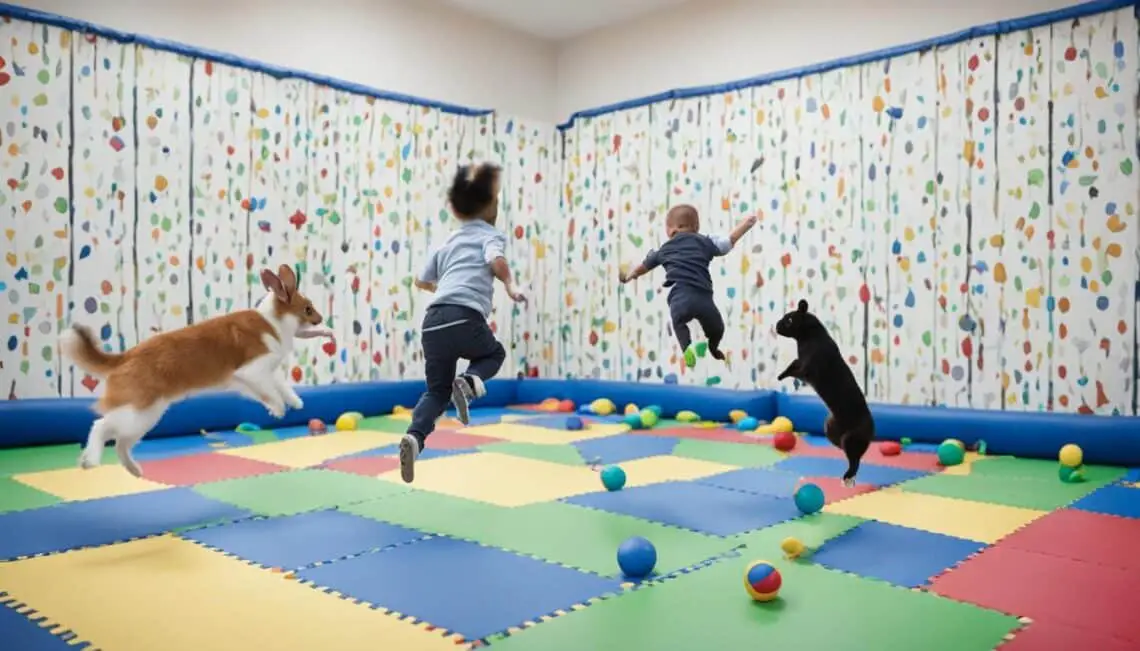
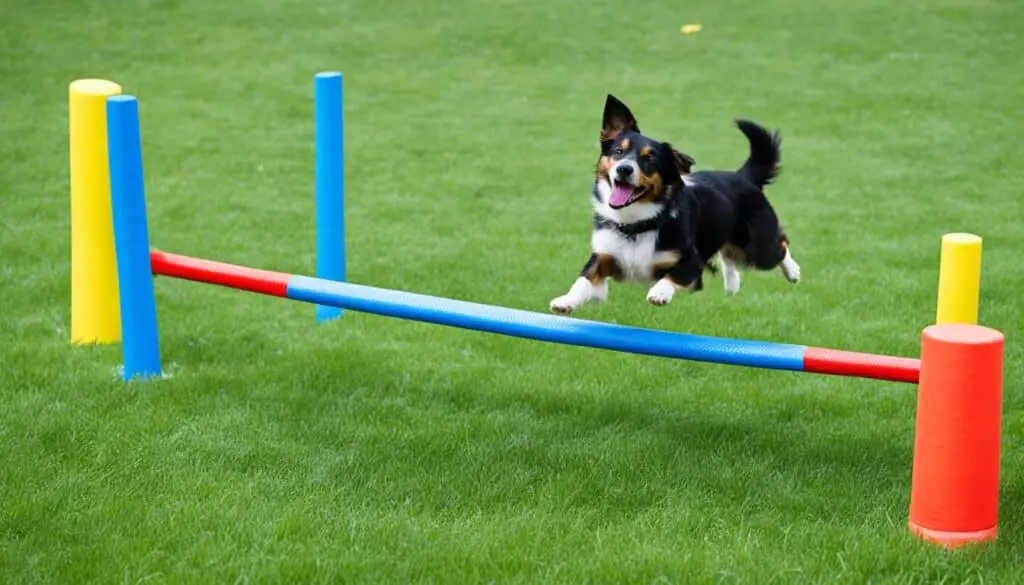
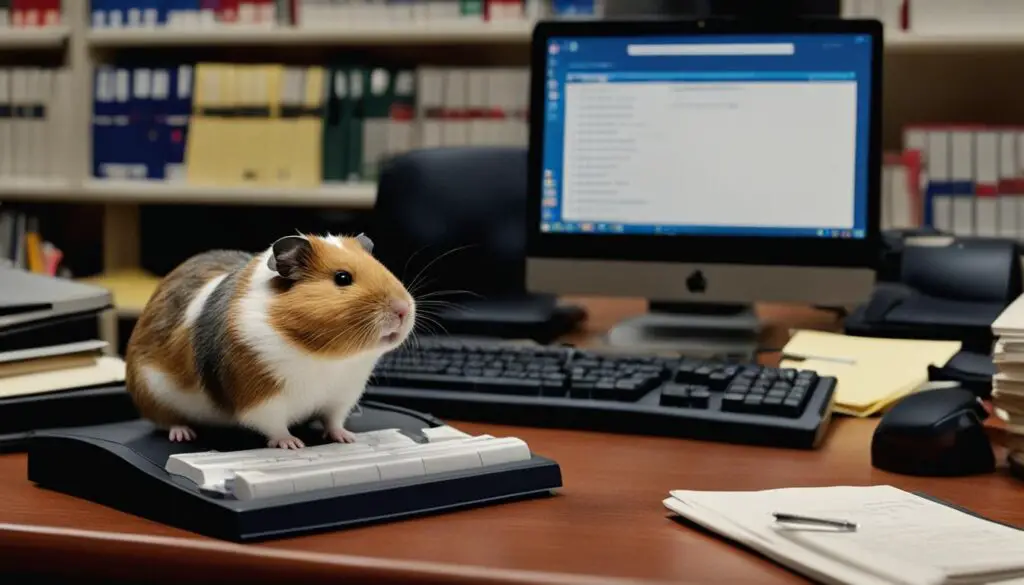
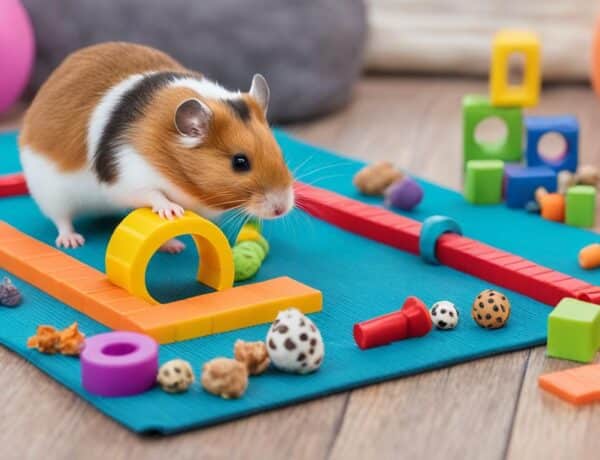
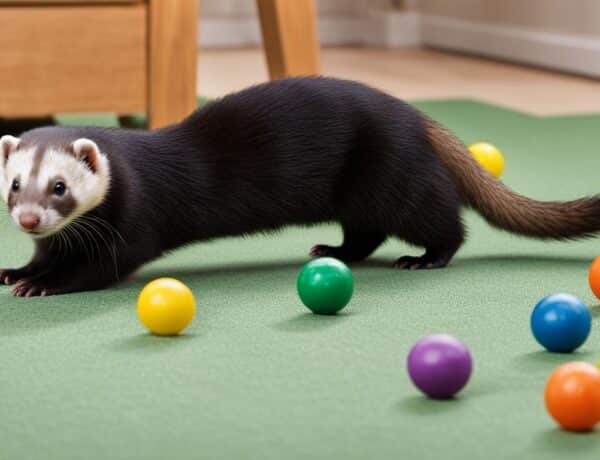
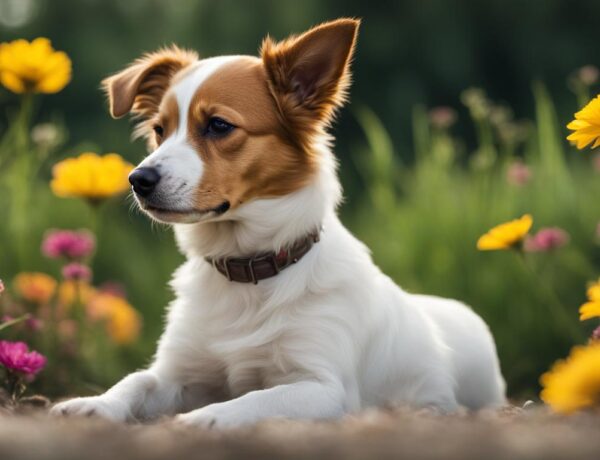
No Comments